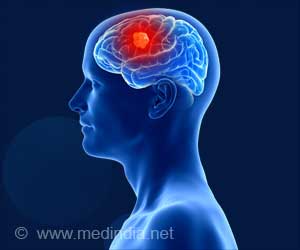The World Red Cross Day is to be observed on 8 May. The 2017 theme is ‘Less Known Red Cross Stories’.
- The World Red Cross and Red Crescent Day is observed every year on 8 May to commemorate the birth anniversary of the founder of this worldwide movement.
- This year the theme is ‘Less known Red Cross Stories’. An online essay and photograph competition is to be held on this occasion.
Besides commemorating Dunant’s birth anniversary, the day is also meant to celebrate the seven principles of the International Red Cross and Red Crescent Movement. The 1965 Vienna Proclamation of the Fundamental Principles of the Red Cross includes the following points: Humanity, Impartiality, Neutrality, Independence, Voluntary Service, Unity and Universality.
The World Red Cross Day also provides the opportunity to pay tribute to the 17 million Red Cross volunteers and staff who risk their lives every day to bring relief and care to the needy, in this growing climate of political and social instability, and burgeoning religious fundamentalism.
The three pillars of the movement are the International Committee of the Red Cross, International Federation of Red Cross and Red Crescent Societies, and the National Red Cross Societies, while the red cross, and the red crescent, against a white background, are its emblems in Non-Muslim and Muslim countries respectively.
‘Less Known Red Cross Stories’
The 2017 theme for the World Red Cross Day is ‘Less Known Red Cross Stories’ with the novel perception of bringing to life inspiring stories of humanitarian pursuits across the world, through online essay and photography competitions. The competitions are to be organized by the Indian Red Cross Society, the International Federation of Red Cross and Red Crescent Societies (IFRC) and the International Committee of the Red Cross (ICRC).
The jointly organized online competitions are free and open to all, except for the Red Cross staff members. The goal is to draw motivational stories and photographs from the public at large. They will be judged by a jury who will give the final verdict.
- Essay : The topic is Beyond the Century – My Vision
- Photographs : The topic is My Experience over a Century
The history of the ICRC dates back to 1859 when Dunant, a businessman from Geneva, Switzerland, arrived in Solferino, Italy as part of a business trip. His arrival coincided with the Battle of Solferino. Dunant was revolted at the horrific aftermath of the battle which he witnessed first hand. He then took it upon himself to assemble help, bringing together the civilians to aid and assist the wounded.
The seeds of what was to become the worldwide Red Cross and Red Crescent Movement were sowed during that fateful moment when Dunant decided to mobilize help for the wartime soldiers and victims. On his return to Geneva, he published a book called Un Souvenir de Solferino (A Memory of Solferino), describing his experiences. It was here that he put forth the proposal for a neutral organization that would provide supplies and care to victims of war. In 1863, a five-member committee was created by the Geneva Society for Public Welfare of which Dunant was one of the members. The date of their first meeting has since been considered the founding date of the ICRC.
The International Federation of Red Cross and Red Crescent Societies (IFRC)
In 1919 the League of Red Cross Societies was founded, which was to become the International Federation of Red Cross and Red Crescent Societies (IFRC) in 1991. Currently, the IFRC coordinates between 190 National Red Cross Societies across the globe.
The Indian Red Cross Society (IRCS)
The Indian Red Cross Society was established way back in 1920. Apart from disaster management and community care, the IRCS’s activities include:
- Blood Bank Services: The IRCS has the largest voluntary blood bank service in the country with over 100 blood banks across India.
- HIV/AIDS: The IRCS plays a pivotal role in raising awareness on, and prevention of, HIV/AIDS. It actively provides care to the children of HIV positive women, especially among the lower economic sections of society.
- Maternal and Child Care: In keeping with their humanitarian principles, mother and child welfare activities have been carried out by the IRCS since 1954.
- Family Welfare: The IRCS encourages family planning and promotes the use of contraceptives. The numerous Red Cross centers and welfare clinics across the nation actively engage in welfare activities for the underprivileged sections of the community.
- Hospital Services and Home for Disabled Servicemen: The IRCS runs welfare services in military hospitals. It provides recreational and psychological support to the sick and the wounded. Since 1946, it also runs a home for disabled servicemen in Bangalore.
- Vocational Training Services: The IRCS trains poor, backward caste women, with the purpose of giving them a vocation in life. These women are then able to take on important responsibilities, earning their own living and supporting their families. Encouraging these otherwise disadvantaged women to make active decisions about their lives, giving them a voice, and providing them with an independent agency, are some of the tasks performed by the IRCS.
- Tracing Activities: The IRCS has played a pivotal role in mobilizing help to trace missing persons after some major calamity, bringing together loved ones who had been lost without a trace.
- Nursing: The IRCS also provides training in nursing and midwife activities.
It is to celebrate this respect for humanity, and the spirit of unconditional humanitarianism, that the World Red Cross Day is observed.
References:
- International Committe of the RedCross - (https://www.icrc.org/eng/who-we-are/history/overview-section-history-icrc.htm)
- Indian Red Cross Society - (http://www.indianredcross.org/archive.htm)
Source-Medindia









